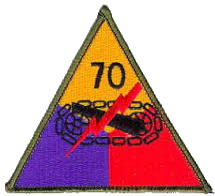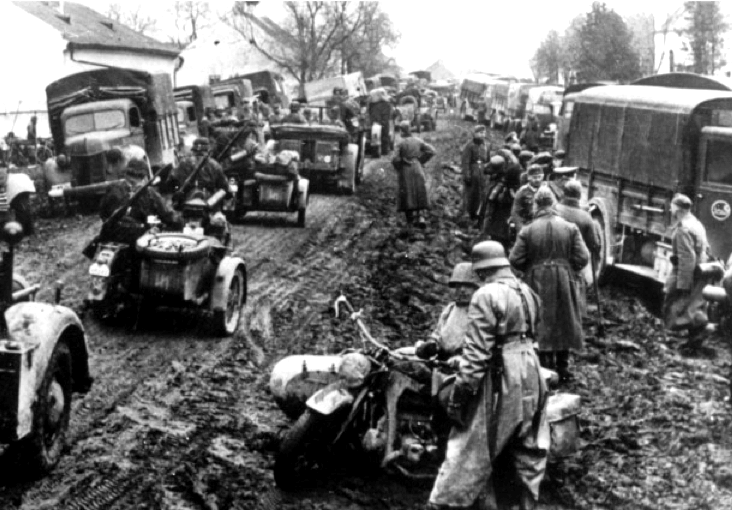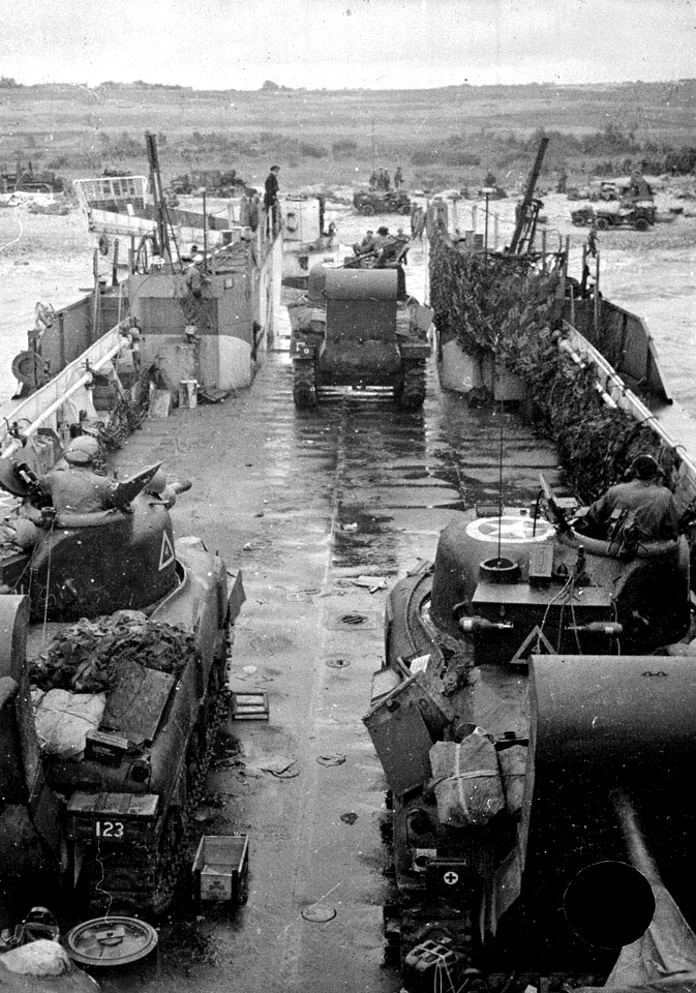Document Source: Original History of the 70th Tank Battalion during World War Two, (1945)
Major, 70th Tank Battalion, Henry E. Davidson, Jr, Commanding
At 1100, on December 16, 1944, an alert order was received by all companies of the 70th Tank Battalion. The order came at an inopportune time for the battalion had just pulled into Luxembourg and was already in the process of servicing and repairing its vehicles, following the rugged fighting in the Hürtgen Forest. Many of the tanks were stripped down for complete maintenance and replacement of parts. Work was at once speeded up and the disabled tanks and those few tanks which were ready to roll were immediately dispatched to join the 12th Infantry Regiment (4th Infantry Division) in engaging the enemy.

 The situation was critical. The German had suddenly launched a huge counteroffensive which was aimed directly at the city of Luxembourg. FM Gerd Von Rundstedt had unleashed a powerful force against our thinly-spread line defending the ground east to Luxembourg. The line, manned by the US 4-ID had already begun to sag under the terrific pressure.
The situation was critical. The German had suddenly launched a huge counteroffensive which was aimed directly at the city of Luxembourg. FM Gerd Von Rundstedt had unleashed a powerful force against our thinly-spread line defending the ground east to Luxembourg. The line, manned by the US 4-ID had already begun to sag under the terrific pressure.
Dog Co, which had been guarding Radio Station Luxembourg, was the most nearly ready and moved out first. The light tankers contacted the 2/12-IR, which at the time was desperately in need of assistance, some of their units having already been completely surrounded. One platoon of Able Co, arrived in time to move out with the light tanks, and after quickly mounting infantrymen on the tanks, the small force set out to rescue Fox Co, at Berdorf. Baker Co meanwhile had sent what few tanks it had ready to the aid of the 3/12-IR at Herborn. There the tanks picked up eleven doughboys from King Co and proceeded north to Osweiler to open up a vital road net.
This was accomplished and some Love Co doughs who had been isolated at Osweiler were rescued. Another unit of infantry was reported to be isolated at Dickweiler, so the small task force consolidated quickly and moved out again along a 2500-yard stretch of road which was covered by enemy direct fire and artillery. They ran the gauntlet without loss however and broke into Dickweiler just in time to meet an attack by two companies of the 212.Volksgrenadier-Division.
The attack withered under the tremendous volume of fire from the tank guns and infantry small arms. This action completely stopped the enemy for that day. The next day, Charlie Co moved up and strengthened the line of defense north of Osweiler. It was difficult to spot any enemy activity that day due to persistent fog. The 3rd Platoon of Able Co tried to return to the rear for maintenance and supplies but was ambushed by a Panzerfaust-Panzerschreck team. The platoon was wiped out. Tanks remaining on the forward line held their offensive positions in spite of continuous artillery barrages and succeeded in repelling every attempt by the enemy to penetrate their line. Dog Co tankmen allowed a large enemy patrol advancing across open ground in a V formation to come within 75 yards, then opened up with everything they had. After the smoke had cleared from the scene they counted 142 dead Krauts. Time after time the 70th tankers and the doughboys of the 12th Infantry broke up enemy infiltrations and counterattacks, which must have been a crushing blow to the morale of the German troops and commanders all the way up to the High Command. The defensive fighting continued on until Christmas Eve when orders were received which relieved the 70-TB of that sector. Under the circumstances, there could hardly have been a more welcome Christmas present for the tankmen. After eight consecutive days of cold and bloody fighting, the battalion with the exception of the assault gun platoon moved to the rear and enjoyed Christmas dinner in free Luxembourg.
Thus the 70th Tank Battalion had added another Mission Completed to its long list and in saving Luxembourg had won itself another bit of glory. The commander of the 12-IR, Col R. H. Chance, expressed his sincere gratitude for the job done by the 70th tankmen in a letter of commendation:
Throughout the period of December 16 to December 24, 1944, the 70th Tank Battalion rendered invaluable tank support to the 12-IR in bringing to a standstill the German counteroffensive launched against this regiment. During the fiercest fighting, your tanks were ever foremost in the action providing strong fire support and inflicting very heavy casualties against the enemy. On occasion when units of the regiment were completely surrounded and cut off your tanks were ever ready to run the gauntlet of fire to deliver ammunition and food to the isolated troops. At times when our lines were thinly held and all available firepower was needed at the front your tanks unhesitatingly remained in the front lines with the infantry troops, thereby bolstering the morale of the foot soldiers and strengthening our defensive positions. The highest praise is deserved by you and the officers and enlisted men of the 70th Tank Battalion for the most outstanding tank support that this infantry regiment has ever witnessed.
CREATION
The 70th Tank Battalion, the oldest and most experienced independent Tank Battalion in the ETO, was the first GHQ tank battalion in the history of the American Army. From the 1st Battalion of the old 67th Infantry Regiment (Medium), then stationed at Fort George G. Meade (Md), the outfit was redesignated 67th Armored Regiment on June 15, 1940, constituted on July 10, 1940, in the Regular Army as the 70th Tank Battalion (Medium), officially activated on July 15, 1940, then, finally, redesignated 70th Light Tank Battalion on October 7, 1941. The battalion observes the date of June 15, 1940, each year as Organization Day. The 70th’s first commander was Col Stephen G. Henry, who was next succeeded by Col T. N. Stark. The 70th was originally built around officers and enlisted men of the Regular Army, and when it was activated in October 1940, furnished a cadre for training to the 1st Tank Group. The first fillers, or selective service enlisted men, were assigned to the battalion two months later. In early 1941, the battalion less Able A went to Tennessee for maneuvers and returned to Fort Meade in July. Co. A had been sent to Fort Devens (Mass) for a contemplated movement overseas but did not sail. In the fall of 1941, the 70th as a whole unit went south to participate in the Carolina maneuvers.
In March 1942 the battalion moved to Fort Bragg (NC) where it immediately began amphibious training along the coast. Men of the 70th realized the time was rapidly approaching when they would be seeing action overseas. They went about their training in earnest. Maj John C. Welborn assumed command of the 70th on March 23, 1942. Six months later, in September, orders for the overseas movement came through and the battalion embarked for foreign shores on January 14, 1943. Destination: North Africa.
NORTH AFRICA
As regards the 70th’s fighting in North Africa, all honors went to Able Company. Special credit should be given to the officers and men with Able Co at that time for their assault landing on Algeria and for their achievements in the Tunisian Campaign. Able Co, as a part of the 39th Infantry Combat Team, made a successful landing at Algiers on November 8, 1942, through a curtain of enemy aerial bombardment. This was the 70th’s first commitment against the enemy. Combat technique was developed during the first days of fighting and by the end of December, the tankmen were fighting like experienced veterans. They succeeded in steadily gaining ground from strong and stubborn units of the Afrika Corps in the Pichon – Ousseltia sector. Able Co fought a part of the Eastern Assault Force, US Army, and later came under the control of the XIX French Army Corps. The Tunisian battles continued until May 1943 when the German effort dwindle and suddenly collapsed. Then followed the mass surrender of Axis troops and equipment. After seven exhausting months of fighting the men of Able-70-TB saw over 10.000 enemy troops, including remnants of the Hermann Göring Division, give themselves up.
The main body of the 70-TB, during the Tunisian Campaign, was encamped at Tlemcen, Algeria, where the battalion was training some newly formed French Armored units in the use of American tanks and weapons. After the rout of the German army in North Africa, came Sicily – a stepping-stone to the not-so-soft underbelly of Hitler’s Europe. There was bound to be tough fighting on Sicily. The battalion reconnaissance party consisting of two officers and ten enlisted men landed on D-Day with the Rangers. The main body landed in mid-July and for the first time, the battalion operated as an entire unit in a shooting war. All of the negats were light tanks then, but even so, they walloped the heavy German panzers wherever they found them. The fighting lasted throughout the summer and was tactically successful, but it was also treacherous and there were losses. However, the 70th knew itself now to be battlewise. In a letter to the battalion commander, Gen Terry Allen (CG of the 1st Infantry Division) praised the 70th for its action in Sicily:
I wish to thank you personally and in the name of the 1st US Infantry Division for the loyal cooperation of the 70th Tank Battalion (L) during the Sicilian Campaign. The actions of the battalion at Barrafranca, east of Caltanissetta, at Enna, at Alimena, and at Bompietro were fine examples of the intimate relationship that existed between the Division and your Battalion. They were also a tribute to your leadership, and to the courage and combat efficiency of your men, without whose assistance our common task would have been definitely more difficult.
Leaving Palermo, the battalion sailed for England and arrived late in November 1943. The unit was quartered at Barton Stacey and Camp Devon. Intensive training was immediately begun. Foremost in everyone’s mind was the all-important business of preparing for the approaching invasion of the continent. There were rumors galore. Then would D-Day come?
NORMANDY – D Day
It came on June 6, 1944 – the long-awaited D-Day. The 70th, attached to the 4th Infantry Division and now equipped with medium tanks, was among the first to land. Actually, the invasion began the day before, on June 5, but had to turn back because of a storm over the channel. The weather was quite clear on the 6th although an early morning mist still clung to the water. The sea was choppy. The plan was to establish a beachhead along the Cherbourg Peninsula, consolidate quickly, then push inland and neutra1iBe the beach defenses. But there was trouble even before shore was reached. All sorts of obstacles had been prepared by the Germans to harass and destroy, the invaders. There were thousands of mines, underwater obstructions, wire entanglements, huge coastal guns, and light weapons to cover every inch of shoreline. After all, the Nazis had spent nearly four years strengthening their Atlantic Wall and now the hour was at hand to crush the menace of invasion once and for all, which they tried desperately to do. The LSTs and LCTs bearing men and heavy equipment approached Utah Beach in the face of terrific resistance. Lead and steel came streaming from the enemy emplacements and raked the assault boats over and over in a deadly crossfire. Some capsized and sunk but the others kept right on plowing in towards the beach. The firing became even more intense as the boats reached 100 yards of the shore. One LCT carrying part of a platoon of Able Co struck a large mine which blew the 32-ton tanks 50 ft. into the air end-over-end.
Able and Baker Cos were the first to land followed by Charlie Co. Only the strongest exertion of stamina and determination, plus a lot of luck could have made the landings as successful as they were. The beachhead was secured despite heavy losses in men and materiel, and once ashore the tankers and doughs struggled ahead to gain more ground. For their D-Day operations the men of the 4-ID and attached units received the following commendation from their commander, Gen Raymond O. Barton:
You have met and beaten the enemy in your first combat and successfully completed a difficult and hazardous campaign. Forcing a landing on enemy-held France, you have fought magnificently through every obstacle to glorious victory. The superb bravery and devotion to duty you displayed won for the 4th Infantry Division added laurels and gave it the honor of being the first Allied unit to enter the city of Cherbourg. Your noble achievements have earned the respect of the entire army and the proud gratitude of the nation. To this, I add my heartfelt thanks to every individual, and my sincere congratulations.
After having overcome coastal defenses the companies advanced inland over causeways crossing flooded areas to St Marie du Mont. During this time the light tanks of Dog Co had been working with the 101st Airborne Division in taking Utah Beach and were also making progress inland. Vigorous fighting continued day after day but by the end of June, after spearheading an attack through Montebourg, the 4th Infantry Division had forced the surrender of the Nazi Fortress Hamburg, a key coastal stronghold. The port of Cherbourg fell on June 26. For its contribution to the success of D-Day, the 70th was awarded the Présidential Unit Citation, as stated in General Order No. 85, published by the War Department.
The 70th Tank Battalion is cited for outstanding performance of duty in action against the enemy. The battalion courageously participated in the assault on the beaches of the Cotentin Peninsula, during the invasion of the Continent, coming ashore in the first wave, successfully penetrating the heavily fortified beach defenses, and subsequently fighting with distinction in the following engagements: Pouppeville, Audouville-la-Hubert, Ste-Marie-du-Mont, Bouteville, Ste-Mere-Eglise, Huberville, Écoquenéauville, Montebourg, Azeville, Fourarville, Vaudeville, St Floxel, Le Val, Fresville, Écausseville, Le Haut Gelé, Éroudeville, Ozeville, Les Fieffes Dancel, and Quinéville. During most of the above-mentioned operations, the 70th Tank Battalion was employed in the terrain through which it was virtually impossible for the infantry to advance, making it almost essential to have members of the tank crews conduct their own reconnaissance with tank turrets open in areas infected with enemy pillboxes, casemates, emplacements, antitank guns, self-propelled artillery, and mines. Most of these emplacements and positions were neutralized under withering enemy fire, permitting the infantry to advance without suffering heavy casualties. The aggressiveness, intrepidity, and selflessness displayed by the officers and men of the 70th Tank Battalion are a credit to the armed forces and an inspiration for all units of the United States Army.





















